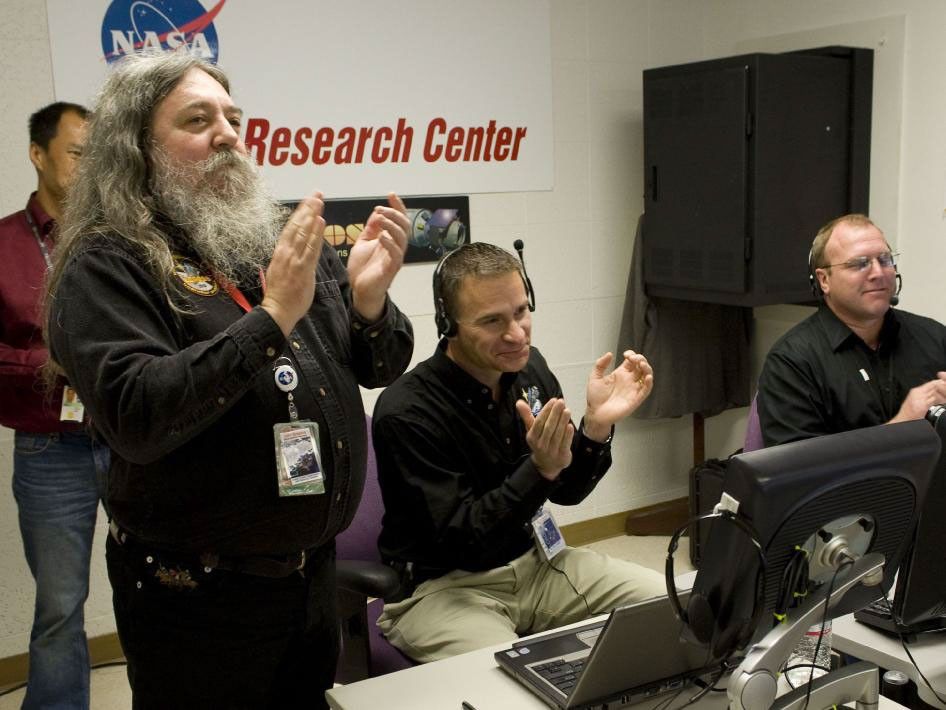
John Bresina
Computer Scientist
Contents
- Where are you from?
- Describe the first time you made a personal connection with outer space.
- How did you end up working in the space program?
- Who inspired you?
- What is a Computer Scientist?
- Tell us about a favorite moment so far in your career.
- What advice would you give to someone who wants to take the same career path as you?
- What do you do for fun?
- If you were talking to a student interested in science and math or engineering, what advice would you give them?
- Read More
- Links to Videos, stories, etc.
- Where are they from?
Where are you from?
I am originally from Milwaukee, Wis., but I am now a resident of San Francisco, Calif.
Describe the first time you made a personal connection with outer space.
I had an interest in space exploration when I was quite young, most likely due to following the Apollo missions on television. By the time I reached high school, I knew I wanted to play some role in the space program.
How did you end up working in the space program?
While still in high school, I debated between two paths that would lead me toward working for NASA. It was going to be either a college degree in space technology or in computer science. Since at the time, NASA funding was tight and many space technologists were becoming health specialists or fence painters, I decided on a degree program in computer science.
It is never too late to discover your life’s passion, and once you have made this discovery, it is never too soon to start pursuing it.- John Bresina
As an undergraduate, I majored in both mathematics and computer science, with a specialization in artificial intelligence (AI). My M.S. and Ph.D. degrees were both in computer science, again with a specialization in AI. The field of AI encompasses a broad range of research, including game playing, speech understanding, vision, cognitive modeling, problem solving, search methods, planning, scheduling, etc.
I got a job as a NASA contractor at the NASA-Ames Research Center (ARC) within the Artificial Intelligence branch in 1988, and 10 years later I became a civil servant.
Who inspired you?
Initially, it was the Apollo astronauts that I saw on television, as well as the scientists and engineers that made their journeys into space possible.
What is a Computer Scientist?
My official NASA job title is Computer Scientist, which covers a wide range of possible jobs. The majority of what I’ve done at NASA is research in AI, specifically in the area of planning and scheduling, and how to apply these AI technologies to space missions. More recently, I’ve worked directly on space missions as part of the mission operations staff employing the technologies that I helped to develop.
Tell us about a favorite moment so far in your career.
The first highlight of my NASA career was contributing to the Mars Exploration Rover (MER) mission. I was part of a joint team from ARC and the Jet Propulsion Laboratory (JPL) that developed a software system called MAPGEN, which got selected to help the tactical activity planners schedule the daily activities of the two rovers, Spirit and Opportunity. This was the first time that the fruits of my (and others’) research and development were going to be directly used on a space mission. That in itself was exciting, but then I was asked to join the MER missions’ operation team at JPL, as one of the six original tactical activity planners. It was an amazing experience to work with world-famous planetary scientists and expert space operations engineers! It was the fulfillment of my high school dream of working on a space mission.
The second highlight was playing a critical role in a recent lunar mission, called the Lunar Crater Observation and Sensing Satellite (LCROSS). I was the lead of the Activity Planning and Sequencing System. I was responsible for constructing the command sequences executed on the spacecraft, as well as the command procedures which were executed on the ground by the flight controllers. It was a very intense, exciting experience; thankfully, all the hard work yielded a highly successful mission!
What advice would you give to someone who wants to take the same career path as you?
A surprising variety of educational backgrounds can be the basis for contributing to space exploration and having a NASA career. Find an area that inspires you and explore how expertise in that area can further space exploration.
What do you do for fun?
Music has always been a passion of mine outside of work, both as an avid concert-goer and as a singer-songwriter. More recently, I have become a film-buff. There are many other activities I enjoy, including getting away from technology (all of it) by hiking in silence through Nature’s wonders.
If you were talking to a student interested in science and math or engineering, what advice would you give them?
Be sure to take advantage of the many educational and internship opportunities that NASA offers students. It is never too late to discover your life’s passion, and once you have made this discovery, it is never too soon to start pursuing it.
Read More
John Bresina’s Role on the MER Mission
LADEE (Lunar Atmosphere and Dust Environment Explorer) Mission Site
Mars Science Laboratory Mission Site
Links to Videos, stories, etc.
Where are they from?
Planetary science is a global profession.

























